With a large portion of the spotlight on Tales of Aria’s exciting launch, it’s as good a time as any to revisit the limited format of Flesh and Blood, where your fundamentals take front and center. Limited is an extremely skill-intensive format. In today’s article, I will showcase the importance of pitching perfect- not singing, but paying the resource cost of cards with Flesh and Blood’s pitch system.
Our Tale Begins with Tragedy...
...a story that I've seen play out at almost every limited event I've ever attended.
Johnny has opened his sealed pool and has landed on playing Lexi, leaning into Shiver as a means to power up his arrows and gain dominate. He is confident that he has drafted enough arrow cards to support the strategy and gain incremental value from Shiver over time, so long as he can bide his time, slot some cards in arsenal, and use various elemental power-ups to push the big attacks over the top.
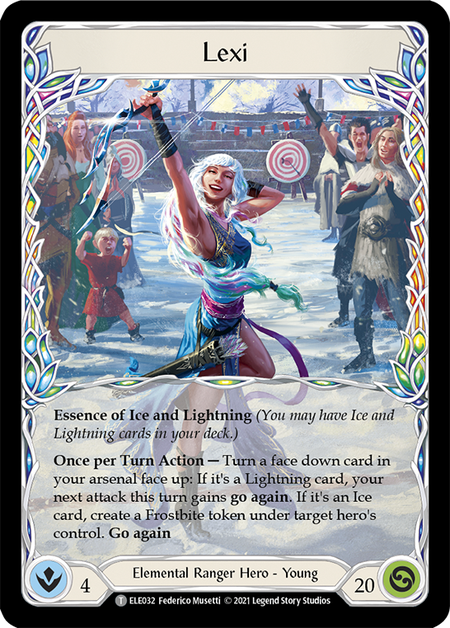
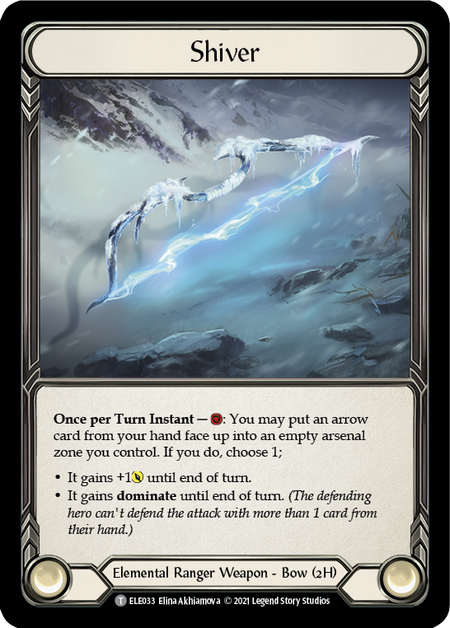
Johnny has done his homework and sleeves up a 30 card deck he is proud of.
In his first match of the day, Johnny goes second and leads his turn with a strong attack, pitching a red Frazzle and utilizing Shiver to load Chilling Icevein into his arsenal with dominate—using another ice card in hand to fuse the attack. Johnny pitches red Buzz Bolt to pay the resource cost of Chilling Icevein. The dominate works, and his opponent is forced to discard another card from their hand on the hit effect.
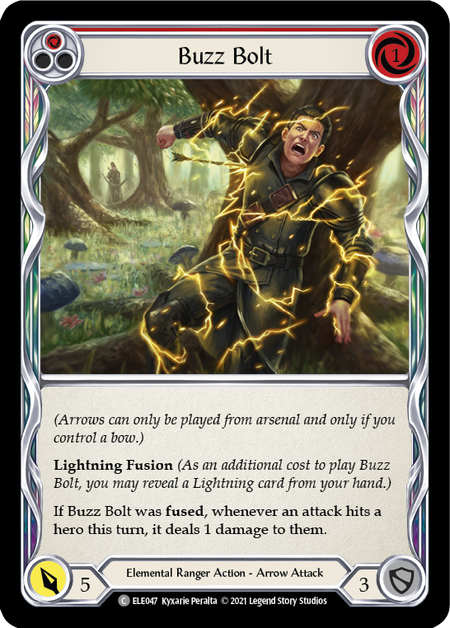
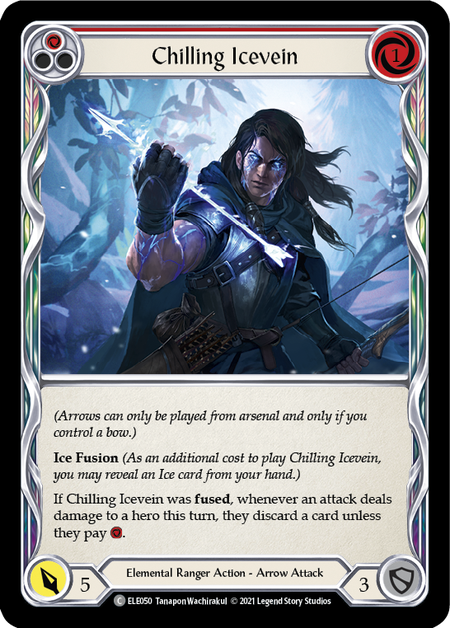
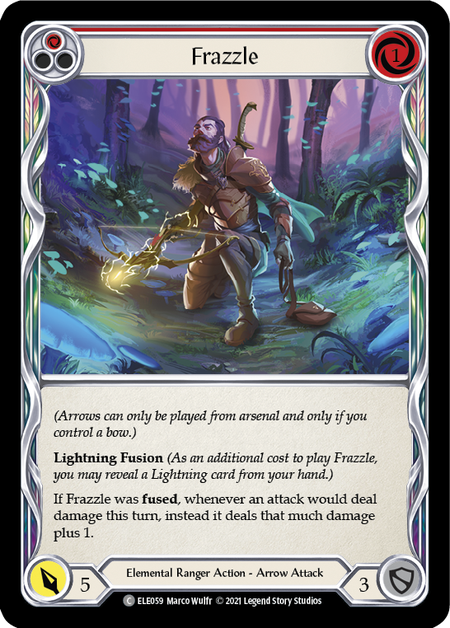
With momentum on his side, he transitions this into another aggressive turn fueled by a full hand a low costs. Knowing that Oldhim is likely to stick him with higher costs if he manages to flip the momentum, he pitches light now.
Throughout the rest of the game,Johnny throws a lot at his opponent, Oldhim. He fuses his attacks, and aims to get all the value he can out of each hand.
But when it comes down to that one crucial moment on turn eight, Johnny finds himself looking at a full hand of red cards: Frazzle, Buzz Bolt... he's seen these before... And now, while his hand has all the attacks it needs to close the game, it's missing one resource to get that 2nd attack fired. Johnny is forced to settle for one attack; the very next turn, he's hit for lethal. Shaking his opponent’s hand, he thinks about how close the game was. Where did he go wrong?
The simple fact is that Johnny underwrit his own loss on his first two turns of the game. By pitching four red cards in a row, he created a hand that, when drawn later in the game, would not be able to generate the resources needed to effectively attack his opponent.
Drawing the first card you pitch in a game is referred to as hitting the ‘pitch cycle’ or ‘second cycle’. In limited, assuming you draw four new cards on each of your turns and run a 30-card deck, you will hit the second cycle on your turn 8- barring any additional draw effects. At that point onward, every card you draw will be drawn in the exact order it was pitched from the start.
If you understand the pitch cycle/second cycle and utilize it well in your own limited gameplay, you will find yourself in better positions at the close of the game.
You Expect Me To Remember That?
In limited, turn eight can often represent the late game, so it is essential to set yourself up to draw playable hands when you hit the second cycle. At this point in the game, variance is reduced to its minimal zenith.
For players without photographic memory, it can seem like a daunting fact to remember every card you pitch- and it is! There is no need to commit so much information to memory. To know when you hit your pitch cycle without all the mental strain, here are a couple tips:
- Commit the first card you pitch (the card that goes closest to your draw pile when put on the bottom of your deck) to memory. Try to know up front how many copies of the card you drafted. Is it a one-of or are you playing more copies? I always try to pitch something memorable (that I don’t want to play on turn one), such as a one-of or a foil card.
- Be mindful of what you pitch and when. After your first pitch, consider what's getting paired with what. You don’t need to intentionally commit them to memory. Just taking a second look will help you recognize the pattern.
- Keep track of the turns in your head, or with a dice off to one side. You can’t take notes in Flesh and Blood, but you might be able to use a small dice to track information without facing any game/judge issues. Start expecting to draw your pitch around your turn 8.
Editor's Note: Our writing staff has had some behind-the-scenes discussion on that last suggestion, and we all have the same opinion that using a dice to count turns is a gray area of the rules. We hope that, in suggesting this, we bring it to a more formal ruling. Until that time, we recommend talking with your judge beforehand for their opinion, and asking your opponent if they're okay with it prior to each game.
Crafting the Second Cycle
If you understand the pitch cycle/second cycle and utilize it well in your own limited gameplay, you will find yourself in better positions at the close of the game. Those games that may have felt ‘close’ from their side of the table were not, and you didn't simply 'top deck' the perfect cards. You drew the exact hand you needed at the time you needed it, and intentionally crafted the hands you wanted to draw in the late game.
When pitching, be mindful of the cards you pitched the previous turn, trying to remember just their color strip/pitch value. We want to recall our pitch efficiently without losing focus on what is happening in the game itself, and we are already remembering and looking out for the first card we pitched.
For resource-hungry classes, try to be mindful of when you are pitching your red cards, and aim to put at least a turn between them unless necessary. The last thing you want to see when the second cycle hits is a handful of reds you can't pay for. Be intentful with your pitches and actively think about crafting hands that you want to draw later in the game, when both you and your opponent are nearing fatigue.
Be intentful with your pitches and actively think about crafting hands that you want to draw later in the game, when both you and your opponent are nearing fatigue.
Understand your power cards and your win conditions: these are the cards that will contribute to your victory and close out the game. It’s okay to pitch them early on to save for when your opponent is worn down. Just make sure they are surrounded by the resources you will need to play them- and that you have kept your life total high enough to reach the second cycle. I usually aim to stow at least one power card in my early pitch, to play it in the late game. In limited, even common red attacks are power cards capable of closing games!
Ready to take what you learned a step further? Once you have mastered your own perfect pitch, watch what your opponent is doing too. Look for the key power cards they are pitching away in the first few turns of the game- they will come back to visit you in the late game. Commit those power cards to memory- it will go a long way toward taking your limited (and constructed) skills to the next level.
It’s a lot to manage on top of everything else that you have to focus on during a game of Flesh and Blood, but this is a skill that will pay dividends once you take the time to practice it and incorporate it within your own play.




